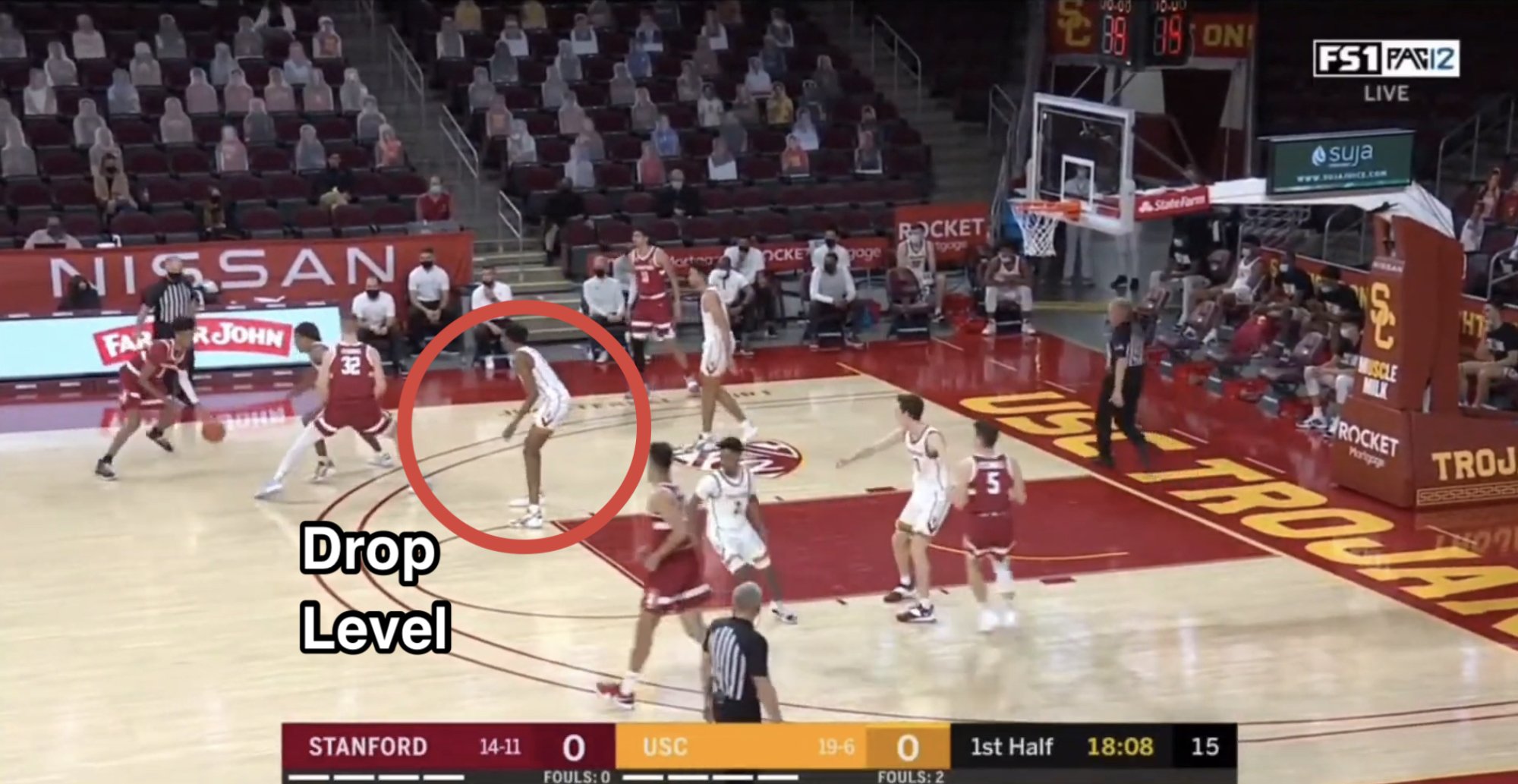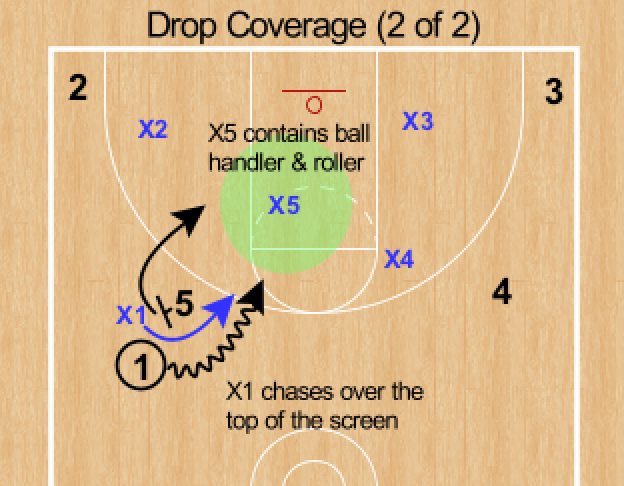Ball Screen Defense—What is Drop Coverage?
WHat is Drop Coverage?
If you watched the 2021 NBA playoffs, you undoubtedly saw drop coverage widely used to defend against the constant ball screen actions. The reason for this is simple—drop coverage emphasizes forcing two point mid-range shots, while protecting the rim and limiting kick out threes (two of the most efficient shots in the game). More aggressive ball screen coverages like blitzing or hard hedging are more vulnerable to giving up shots at the rim or uncontested threes.
This isn’t just a trend at the professional level. More and more teams at lower levels are beginning to teach and implement drop coverage to defend against ball screens. One reason for this is Drop is a relatively simple coverage to understand and pick up compared to hard hedging, icing, etc. Drop is also effective at lower levels like high school as ball handlers at that level are rarely effective pull up mid-range shooters, and the screeners are rarely pick and pop threats from the outside.
In this breakdown, we will look at the basics of Drop coverage and how to use it effectively to neutralize ball screens.
Drop Coverage Set Up:
Unlike more aggressive ball screen coverages, in drop coverage the screener’s defender does not follow the screener to the level of the screen. Rather he sits or drops to the predetermined drop level (usually 6-10 feet behind where the screen is set), like the name suggests. The drop defender’s primary responsibility it to contain the ball handler as he comes off the screen and protect the rim.
To do this, he must position himself with enough depth so as not to get beat off the dribble and between the ball and rim to eliminate straight line drives. In addition to keeping the ball handler in front of him, the drop defender must also keep the screener in front of him as he rolls to the rim.
Drop Coverage Basics:
The on-ball defender’s first job is to force the ball handler to use the screen—rejecting the ball screen is one of the most effective way to counter drop coverage, so this is a must. The screener’s defender is anticipating the ball handler to come off the screen and is positioned as such, allowing the ball handler to reject puts both defenders involved in the action out of position.
Once the ball handler is forced to use the screen, the on-ball defender must chase him over the top of the screen with the goal of forcing the ball handler into the drop defender. Once over the top of the screen, the on-ball defender attempts to recover onto the ball handler or at least get square with him. If he cannot recover and get square, he needs to be in position to contest from behind at the very least. Since the screener’s defender is tasked with protecting the rim, the on-ball defender is tasked with contesting the pull up jumper.
If the ball handler engages the drop defender to try to get to the rim and forces the drop defender to commit to guarding ball, the on-ball defender would then veer off his path and switch onto the screener rolling to the rim.
Off Ball Defense in Drop Coverage:
Drop is also different from other ball screen coverages in that it tries to contain and neutralize the ball screen action with only the two defenders involved int the action. Other coverages like hard hedging require a third defender (not involved in the ball screen action) to tag or help on the screener as he rolls to the rim.
Since Drop attempts to contain the ball screen with just two defenders, the off ball defenders should only help on the action if absolutely necessary. Remember, the goal of drop coverage is to force the offense into taking tough two’s. Over helping and leaving an open player along the perimeter creates a simple read for the ball handler and a potential uncontested three.
Knowing the opponent’s personnel can also dictate how much the off ball defenders help on the action. If you are guarding a shooter, you are better off not helping on the ball screen action to prevent a kick out three. If you are guarding a non-shooter, you can help as needed by tagging the roll or stunting at the ball handler.
Advantages of Drop Coverage:
The biggest advantage of using drop coverage to defend against ball screens is the fact this specific coverage is designed to force the offense to take tough twos. It accomplishes this by the on ball defender chasing the ball handler over the top of the screen (off the three point line) and into the “drop” or help defender (who contests anything at the rim).
This coverage also only uses two players to contain the ball screen action (the on ball defender and the screener’s defender). This means the off ball defenders can focus on covering shooters along the perimeter, rather than defending the ball screen action.
Another benefit of drop coverage is the fact it can be easily implemented and taught, especially at lower levels. Drop is a much simpler ball screen coverage compared to more aggressive coverages like hard hedging or “icing.”
Most of the time, ball screens will be set by post players, meaning the ball screener is being guarded by a post player. With most post players/defenders at lower levels not being the most agile or mobile, drop coverage allows you to play to their strengths and not put them in a tough position like with other aggressive coverages.
Disadvantages of Drop Coverage:
Like all PNR defenses, drop coverage does have a few disadvantages to be aware of. If you are facing a ball handler who is effective in the mid-range game, they could potentially pick this coverage apart—Chris Paul and Luka Doncic put on a clinic against drop coverage in this year’s playoffs doing just that.
Another disadvantage of drop coverage is defending against the pick and pop. If the screener in the action is an outside threat, teams will combat drop coverage by popping him to the perimeter rather than rolling. Since the screener’s defender is dropped, this forces a long closeout and recovery on the pick and pop action.
The final notable disadvantage to drop coverage is the potential for offensive rebounds. If the drop defender is forced to commit to the ball handler, this leaves the usually smaller defender switching onto the usually bigger screener. To combat this, all five defensive players must gang rebound when in drop coverage.




